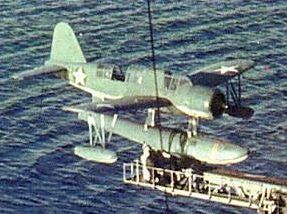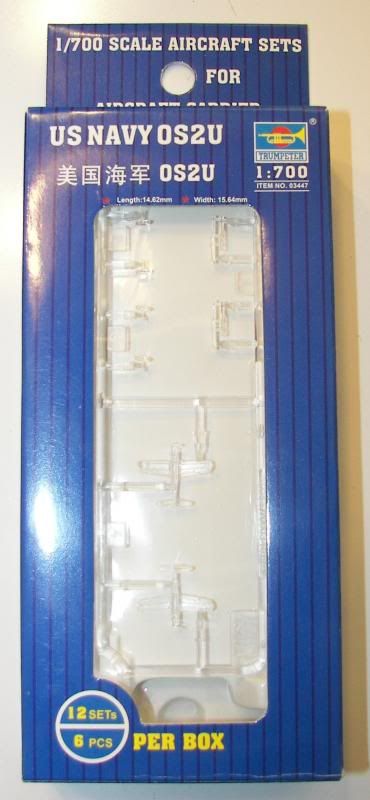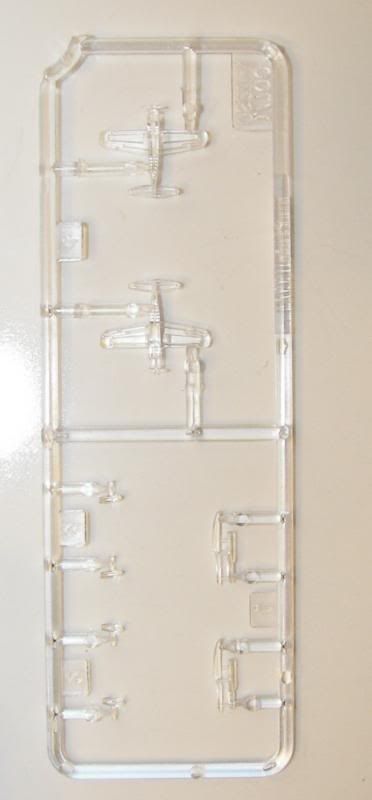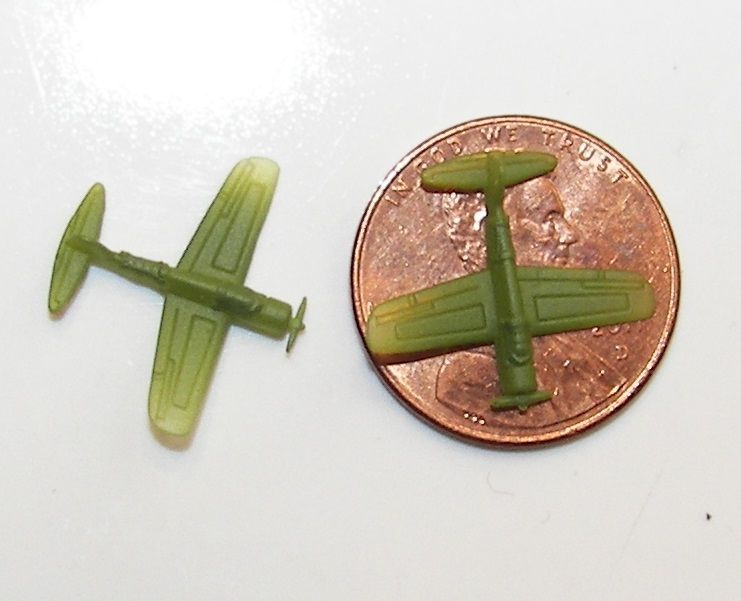I've been working on the O2SU Kingfishers that will sit on the catapults of Alabama. For such little things, they take a whole lot of attention.
First, here's what I was trying to achieve. The photo show a Kingfisher being loaded on Alabama in January, 1943--when she was assigned to the Atlantic. I couldn't find any photos of her floatplanes in later '43 when she moved to the Pacific, so I decided to go with this scheme, changing the national insignia to the star-and-bar that was current at that point in the war. The absence of photos with Kingfishers, in the PTO, makes me wonder if Alabama even carried them at that point, but they look sharp on a model.

Since I didn't care for the kit-included planes, I am using Trumpeter's Kingfishers. I used them last year for the USS Wisconsin (Force of Nature GB), so I had some familiarity with the construction. Everything is molded in clear plastic, so the canopies end up transparent. But that makes the plastic fragile. I snapped one of the horizontal stabilizers during painting, but was able to glue it back in place.

Here's a sprue shot with the pieces still attached. There are four pieces to each plane: the fuselage/wings; the main float; two smaller floats, one for each wing. Detail is pretty remarkable for such tiny planes--engraved lines and even the cockpit framing.

The one-cent piece gives some perspective on the size of these little gems.

I masked the cockpit areas with masking tape strips and MicroMask to fill in. The tape strips were about 1/2 a millimeter wide. They weren't too hard to put on, but it takes an Optivisor to do it.
Then I painted it with Interior Green, since it really is actually possible to see the interior color, through the clear cockpit "glass" when everything is done.

Enough for now.
Thanks for lookin'.